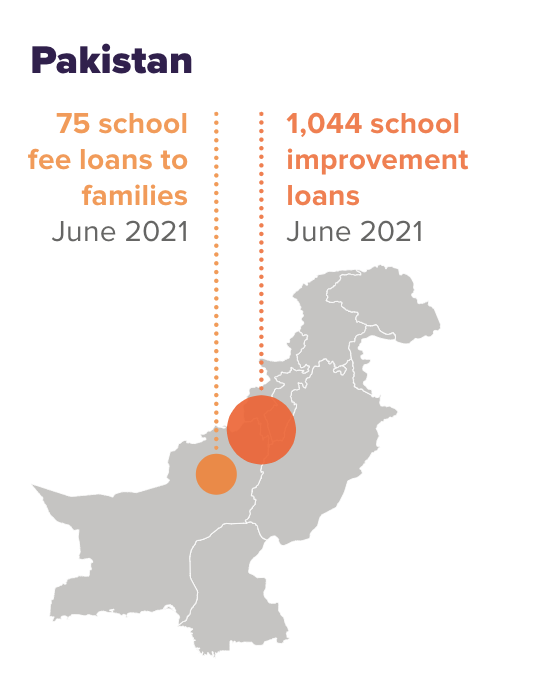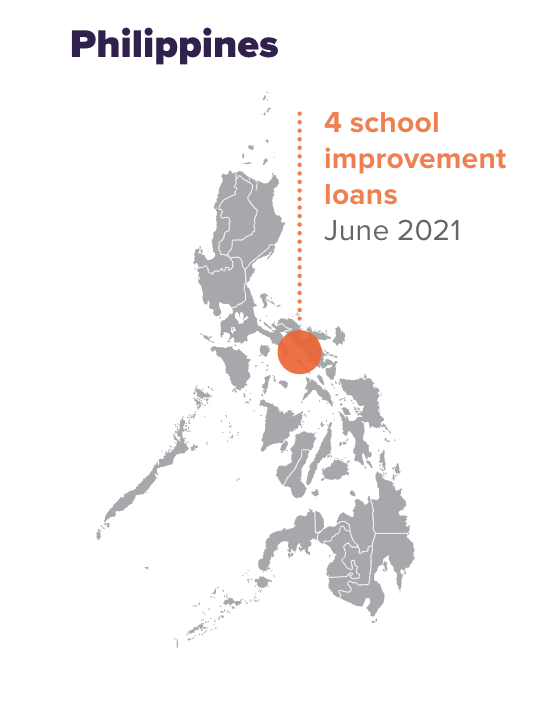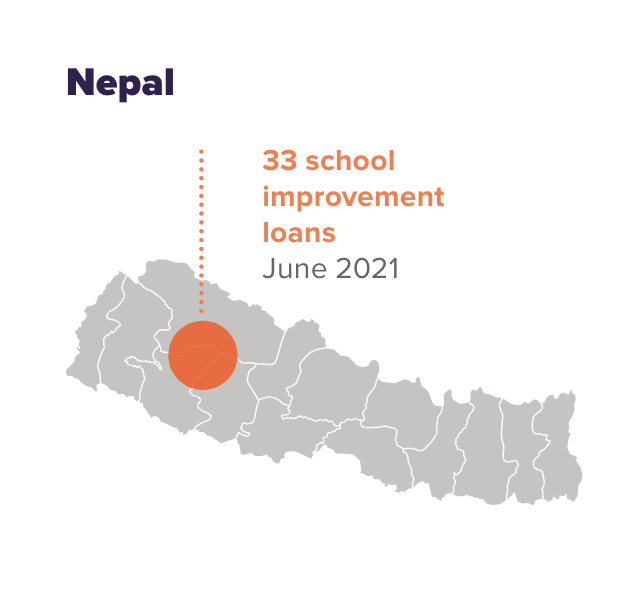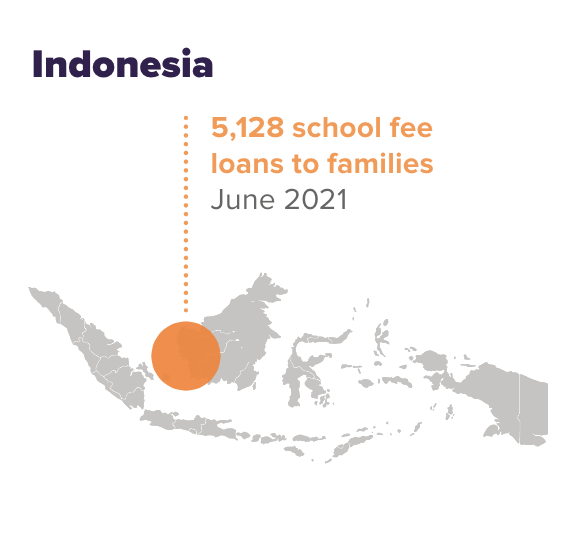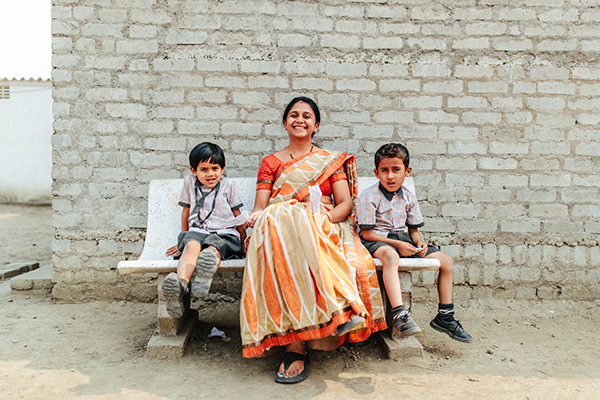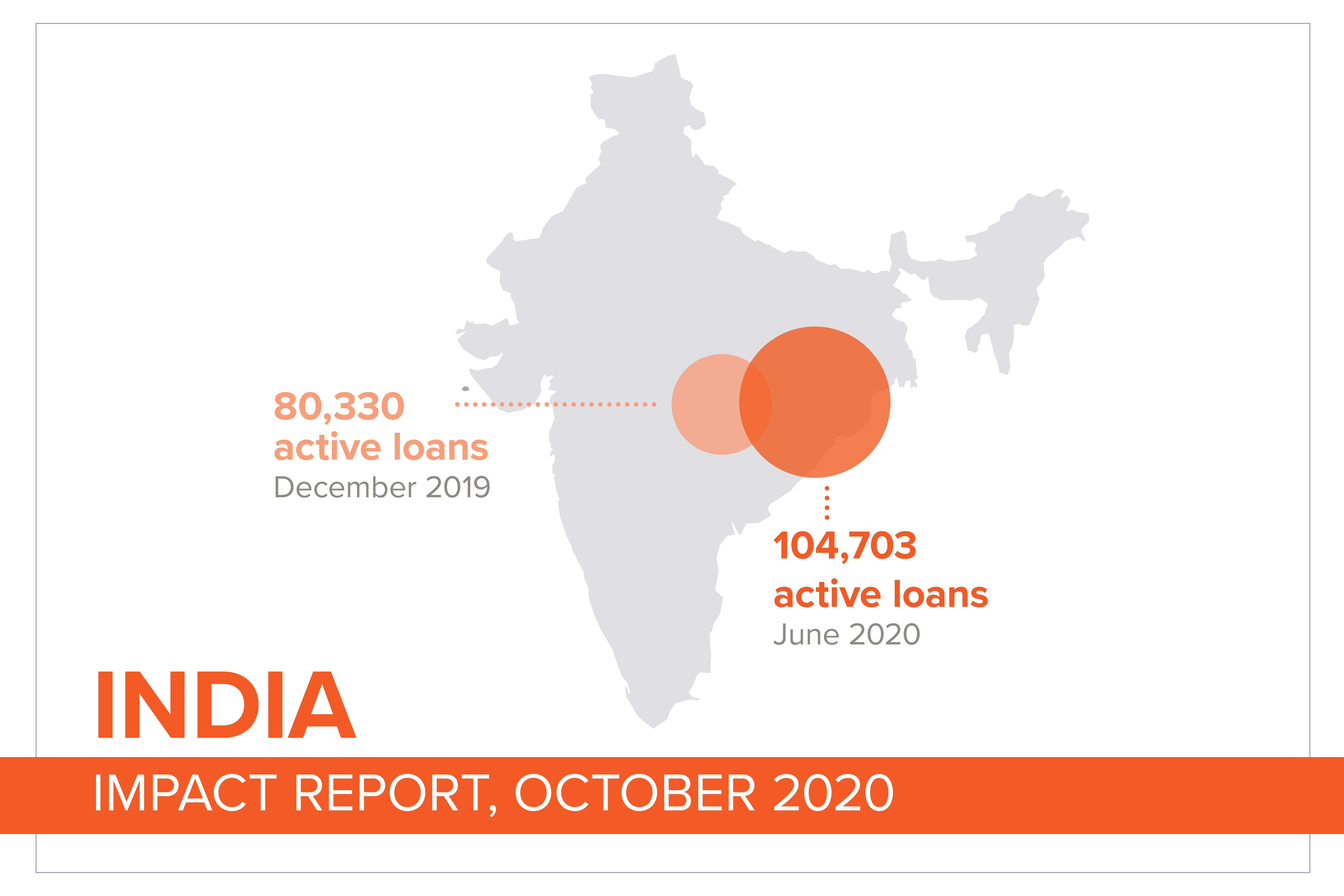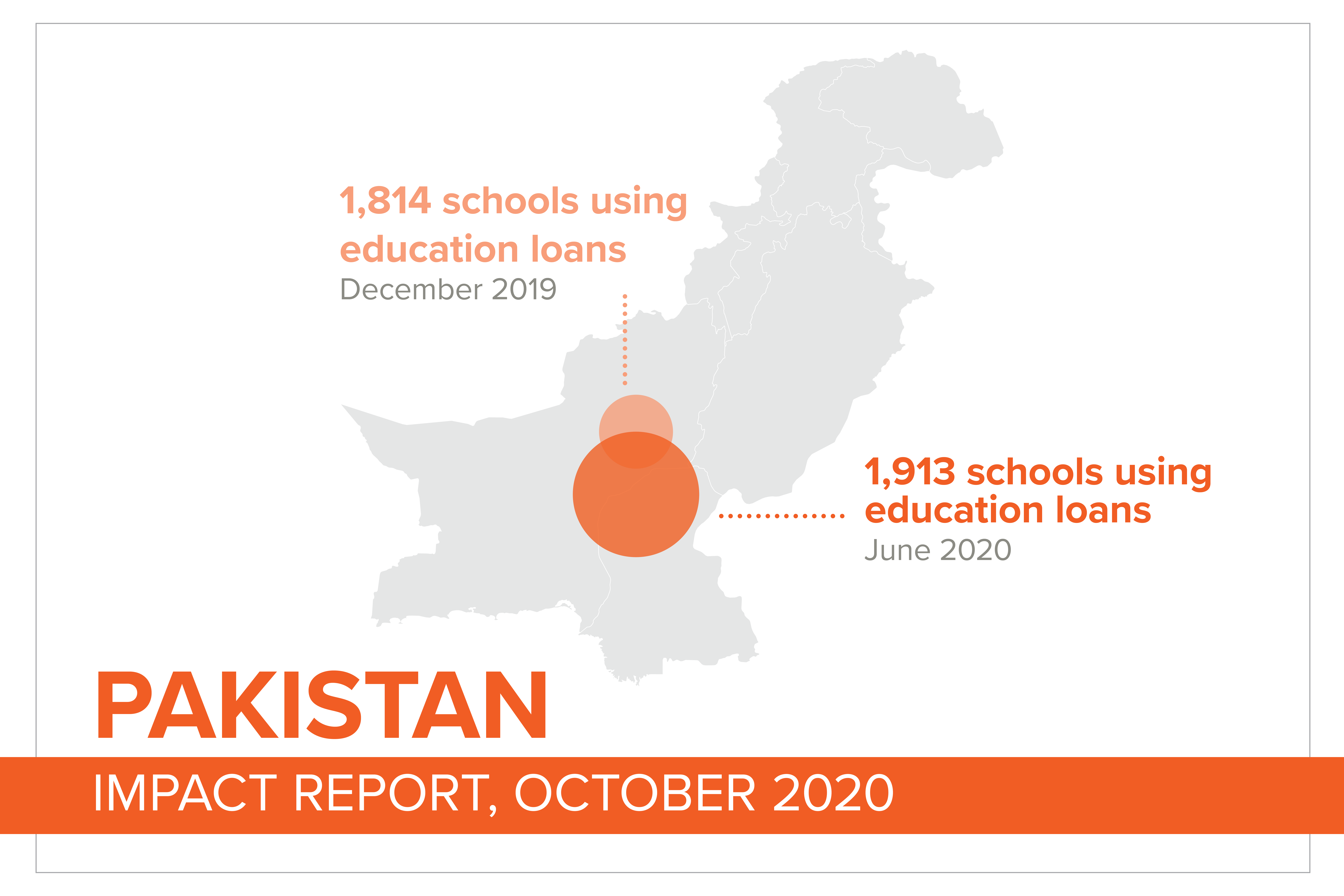EDUCATION REPORT – MARCH 2021 (DATA TO DECEMBER 2020)
2020 was a challenging year for education, with schools temporarily closed due to the global pandemic and a drop in school fee collection, as well as a decline in financing of schools. UNESCO reported that, at the worst point, April 2020, school closures impacted 84 per cent of total enrolled learners across the globe. But a school closure in an environment of good internet access, a home computer and parents with a good education is a very different scenario from that faced by the children we aim to support.
Through Opportunity’s education program finance institutions, many loans were restructured to allow for delayed repayments. Many schools were encouraged to create and deliver lessons by remote means, including online classes, phone calls and physical visits during lockdowns. Schools continued to receive support during this challenging time, including in managing cashflow and help to prepare for reopening.
VOICE FROM THE PROGRAM
THE SPIRIT OF CHANGE
Bapak Namin’s neighbours mocked him for wanting a better life for his kids. “Sending your children to work and earn money for you,” they told him, “is better than you spending money on an expensive education for them.” But Bapak’s son Acu wants to be an engineer, a successful man who leaves poverty behind. His mother, Bu Acih, joined a loan group run by Opportunity’s partner KOMIDA and took out her first EduFinance loan 11 years ago.
The EduFinance loans have seen Acu all the way through primary and high school. His vocational high school is kilometres away. He has a motorcycle, but when it runs out of petrol he walks to school and back – he says he is determined to become a man for his family.
A LIGHT IN THE DARKNESS
In 2020, Acu’s last year of high school, the COVID-19 pandemic struck and his school closed for lockdown. Gone were the days of planning his future with his schoolmates. Instead, Acu had to study at home. The house is dark, with dirt floors and rooms divided by cloth, not walls, because Acu’s parents believed that their children’s education was more important than having a better home.
Like educators all over the world, Acu’s teachers did their best, sending material via email or posting it online with simple instructions. He found it a lot harder to understand the topics than when he was in the classroom, but Acu filled the gaps with YouTube videos. His school is still closed, and Acu is still studying in the dark, but there’s no doubt that because his parents have sacrificed to provide him with an education, he’s one of the lucky ones. He aims to see his family “happily cheerful” in future.
Bu Acih knows that the loans are helping to realise her son’s dreams. “Even though we are constrained by the economy,” she says, “seeing our children passionate about education is gratitude enough. We didn’t know how to get our step in life before, but KOMIDA is helping us reach our son’s future.”

Edufinance loans from Opportunity partner KOMIDA have allowed Acu Setiawan’s family to help him on his way to his dream of becoming an engineer.
STRATEGIC DEVELOPMENT GOAL (SDG)
This program contributes to achieving the fourth SDG goal – Ensure inclusive and equitable quality education and promote lifelong learning opportunities for all. This includes targets 4.1 Ensure that all girls and boys complete free, equitable and quality primary and secondary education leading to relevant and effective learning outcomes; 4.3 Ensure equal access for all women and men to affordable and quality technical, vocational and tertiary education, including university, and 4.8 Build and upgrade education facilities that are child, disability and gender sensitive and provide safe, nonviolent; inclusive and effective learning environments for all. While enormous improvements have been made in achieving universal primary education, progress has been more difficult in some developing regions due to high levels of poverty.
In 2020 1.6 billion children were affected by school closures in over 160 countries. At the end of December 2020 over 900 million children were still affected by partial or full school closures.
Even before the pandemic, approximately 258 million children were out of school – which is one in five school-age children globally. More alarmingly, in developing countries one in four girls is not in school.
Six out of 10 children and adolescents are not achieving a minimum level of proficiency in reading and maths. And yet the top 15 countries in the world that spend the most on education as a proportion of their budget are low- and middle-income countries. Clearly, there remains a gap in access to quality education.
Excluding high-income countries, the non-state education market share globally is over 25 per cent of the total education market. Opportunity’s education program focuses on increasing access to affordable private education by working with financial institutions to provide education loans to cover school fees and tertiary tuition fees. Opportunity’s education program also addresses gaps in education quality through the provision of a holistic three-year school development program to local affordable non-state schools.
Opportunity contributes to the achievement of SDG target 4.8 by addressing a lack of financial support for schools in low-resource environments. Opportunity provides technical assistance to socially-focused financial institutions to develop school improvement loans and tertiary institution loans to upgrade education facilities, including adding classrooms, textbooks and desks, installing running water or gender-separated bathrooms. These are all important provisions that keep students, especially girls, in school.
PARTNER PERFORMANCE
Overall, during the second half of 2020, financial institutions in Opportunity’s education program saw a decrease in loan volumes and value of disbursements of around 30 per cent.
INDIA
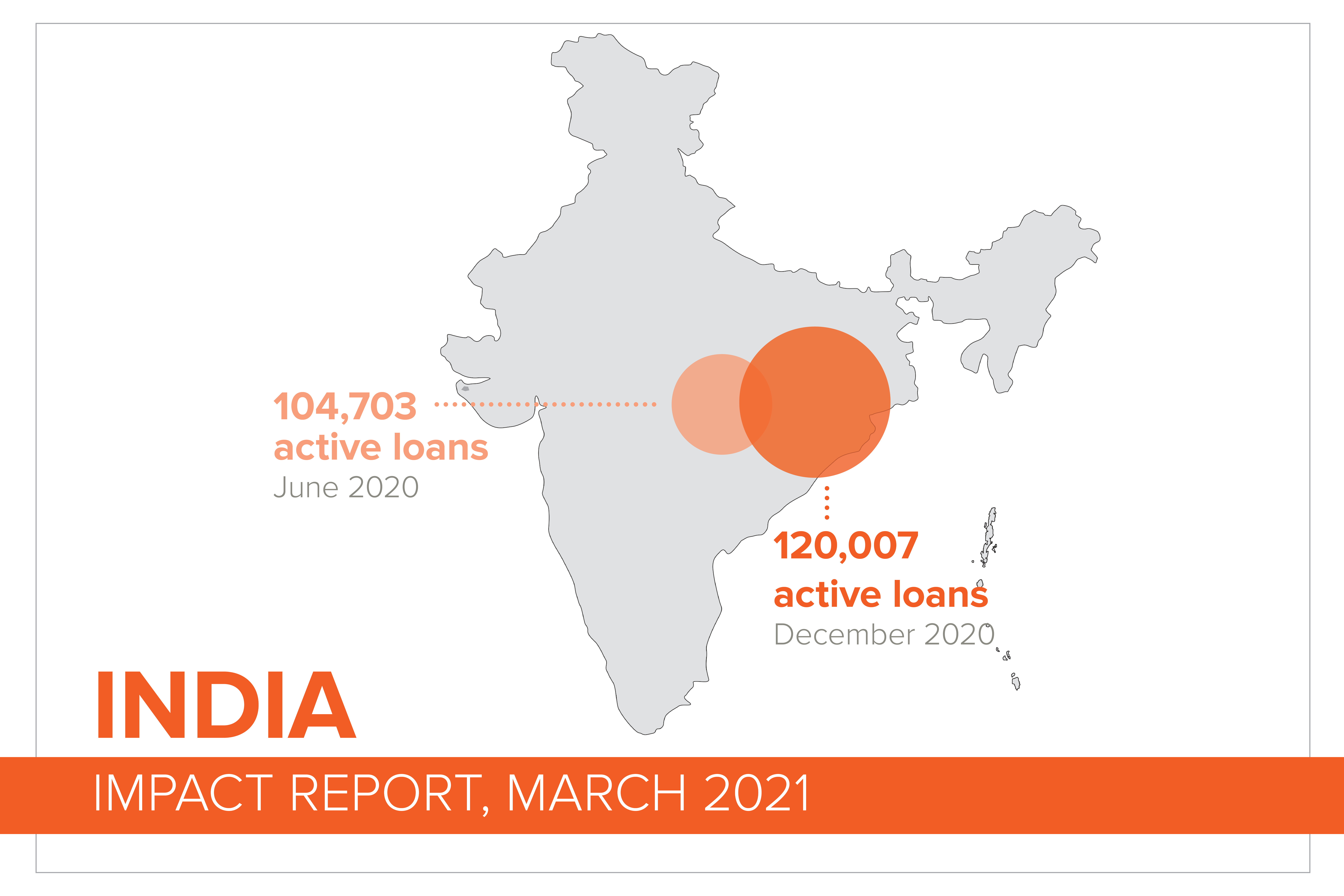
COVID-19 has acted as a catalyst for schools to use new e-learning platforms such as YouTube videos, real-time education apps, Zoom and Google Meet. The Indian government pushed for online classes when schools closed in March 2020. However, the reality for many low-income families in India is that they have no access to computers or stable internet connections, especially in rural areas where only 25 per cent of households have internet access. State governments responded by using television and radio to connect with students, especially in remote areas, but it is estimated that the pandemic has caused substantial learning loss.
By the end of 2020, over 15,000 more families used loans to educate their children and over 4,000 affordable schools borrowed money to expand school premises, add more classrooms, purchase transportation and meet operational expenses. Most schools used the moratorium on microloans mandated by the government during COVID-19 to delay repayments due to a fall in income.
PAKISTAN

In Pakistan, one additional financial institution joined Opportunity’s EduFinance program in 2020. In total, all three institutions provided loans to 1,465 affordable schools to make improvements to their facilities. Some of the loans that were outstanding at the beginning of 2020 were repaid and the schools decided not to take out additional loans due to the operational uncertainty caused by the severe disruption COVID-19 restrictions had made to education and parents’ ability to pay school fees.
During the six months of school closures, 700,000 out of 1.5 million teachers lost their jobs.
To develop a deeper understanding of the impact of COVID-19 lockdown and school closures (March-September 2020), Opportunity surveyed 1,188 parents, 362 owners of non-state affordable schools and 252 teachers in Pakistan, which provided interesting insights into what to expect when schools reopened.
The most concerning finding in the survey was the disparity between parents’ attitude to sending girls (31 per cent) compared to boys (94 per cent) back to school in September in 2020 when schools reopened. On reopening, 50 per cent of 26 million school-aged children went back to school but of those who did not return 60 per cent were girls. We are now working with our financial institutions and the schools to find ways of encouraging girls in particular back into the classroom.
The institutions we work with in Pakistan have developed plans to address this disparity from 2021. These plans include those of one institution, Kashf Foundation, which has decided to only lend school improvement loans to schools with a minimum 40 per cent female student ratio and a commitment to increase that percentage, and plans to lend at least 50 per cent of its school improvement loans to schools led by a female.
INDONESIA
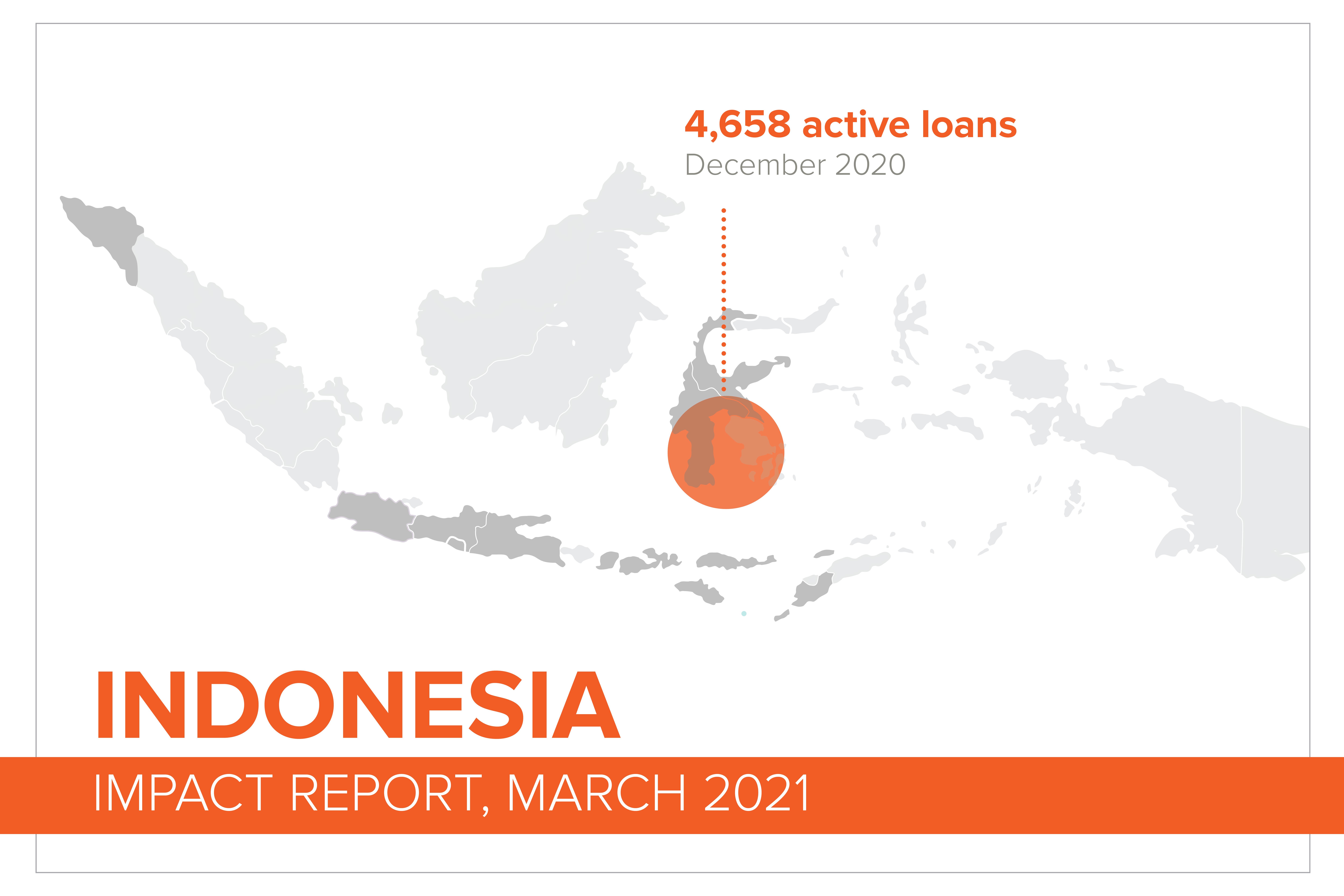
Armed with this market knowledge, Opportunity’s EduFinance technical assistance team supported three socially-focused financial institutions to develop and launch education lending portfolios in the second half of 2020. In total, they lent money to over 4,600 families to educate their children.
PHILIPPINES
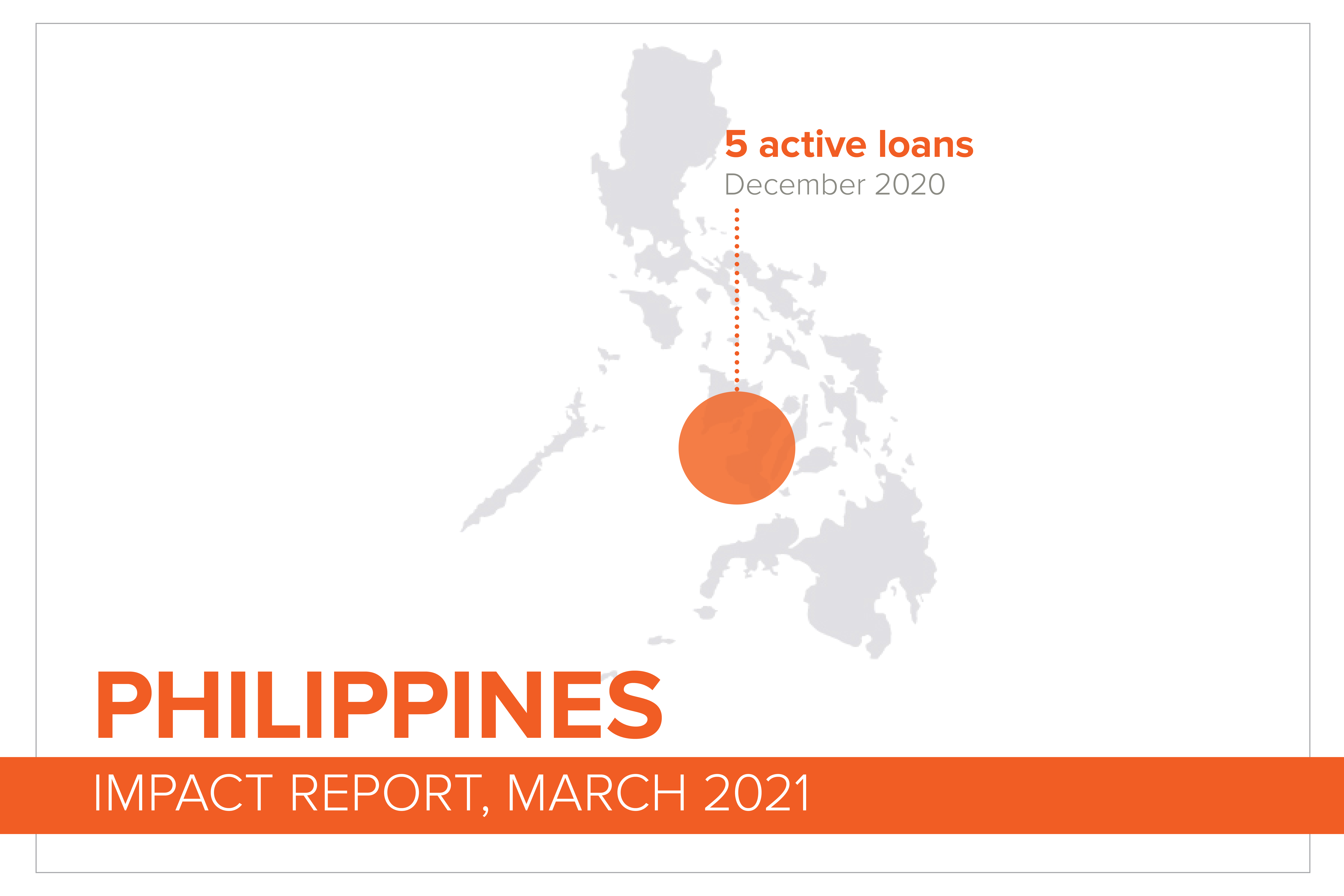
Continuing to expand and engage mission-aligned financial institutions, Opportunity’s EduFinance team undertook a thorough analysis of the scale of the education finance market in the Philippines. Findings included that of 27.7 million school-aged children five per cent are out of school. Private schools make up 12.2 per cent of the market, and six per cent of the population live in extreme poverty (on less than US$1.90 a day).
Based on this market analysis, Opportunity engaged with a new financial institution in the Philippines to develop and launch school improvement loans to address the lack of financial support for schools in impoverished environments. So far, this new Edufinance institution has provided loans to five schools in the Philippines to fund improvements to their facilities.
EDUCATION PARTNER SUMMARY, ASIA
|
COUNTRY
(NO. OF PARTNER FINANCIAL INSTITUTIONS)
|
NUMBER OF ACTIVE EDUCATION LOANS BY TYPE
|
VALUE OF LOAN OUTSTANDING BY TYPE (A$)1
|
|---|
| India (3) |
115,359 school fee loans
4,158 school improvement loans
2 tertiary tuition loans
311 tertiary institution loans
1769 teacher loans*
|
$46,583,042
$77,507,973
$42,622
$16,897,140
$1,518,739 |
| Pakistan (3) |
1,465 school improvement loans
|
$2,380,919
|
| Indonesia (3) |
4, 648 school fee loans
1 school improvement loan
34 tertiary tuition loans
5 tertiary institution loans
167 vocational loans**
633 teacher loans
|
$813,942
$203,658
$27,829
$581,481
$163,483
$2,102,868
|
| Philippines (1) |
5 school improvement loans |
$157,786 |
| | | |
|---|
* Teacher loan: loan to a teacher for professional development, income generation or investment.
**Vocational loan: loan to a student for the payment of fees at a technical or vocational institution.
COVID-19 IMPACT ON EDUCATION IN RURAL INDIA
The COVID-19 pandemic with its panicked domestic migration and skyrocketing unemployment has had an enormous impact on rural households in India. Many affordable non-state schools risk permanent closure, with four out of five schools having collected less than 20 per cent of school fees since schools were closed as part of the strict nationwide lockdown in March 2020.
Starting in October 2020, Opportunity’s EduFinance technical assistance team surveyed 2,088 parents from rural households in India and 442 leaders of affordable non-state schools to assess the effect of the pandemic.
Over 85 per cent of respondents experienced reduced incomes during COVID-19. Most households had to draw down on savings or sell household assets like gold bracelets to meet their household expenses. One in four rural households has children engaged in some form of labour to help supplement falling income, raising the risk that these children will drop out of school permanently.
Almost 70 per cent of parents indicated that they would send their children to school as soon as schools reopened but many affordable private schools are under significant financial stress. Most schools have been closed for over seven months and 51 per cent of schools surveyed reported collecting no school fees in the previous three months. An inability to collect school fees during COVID-19 is a major source of concern for owners of affordable private schools in India. Only 15 per cent of school owners had other sources of income to sustain them during the pandemic.
Staff salaries have been reduced, a majority of schools have struggled to pay salaries regularly and on time and a large proportion have paid no teacher salaries at all. Forty six per cent of schools have laid off teachers. By providing loans to teachers for professional development, income generation or investment, Opportunity is enabling teachers to stay in the education sector through lean times, supporting more students to receive an education.
DOWNLOAD REPORT AS PDF
1 Exchange rate US$1 = A$1.3
Opportunity International US implements the Education program in 25 countries and along with Opportunity International Australia, is part of the broader Opportunity International Network.
Opportunity International Australia provides funding to support the Education program in five countries in Asia.

